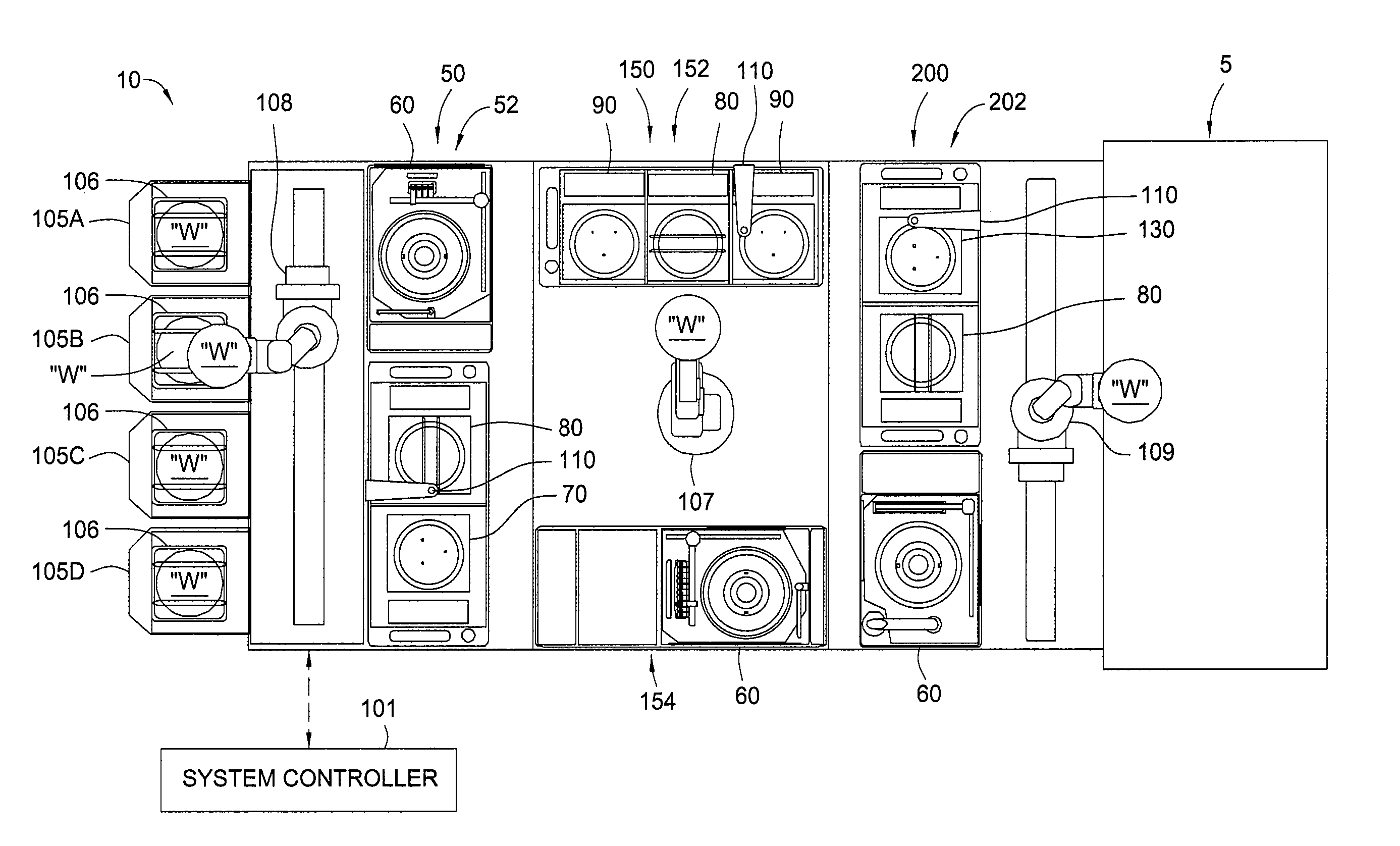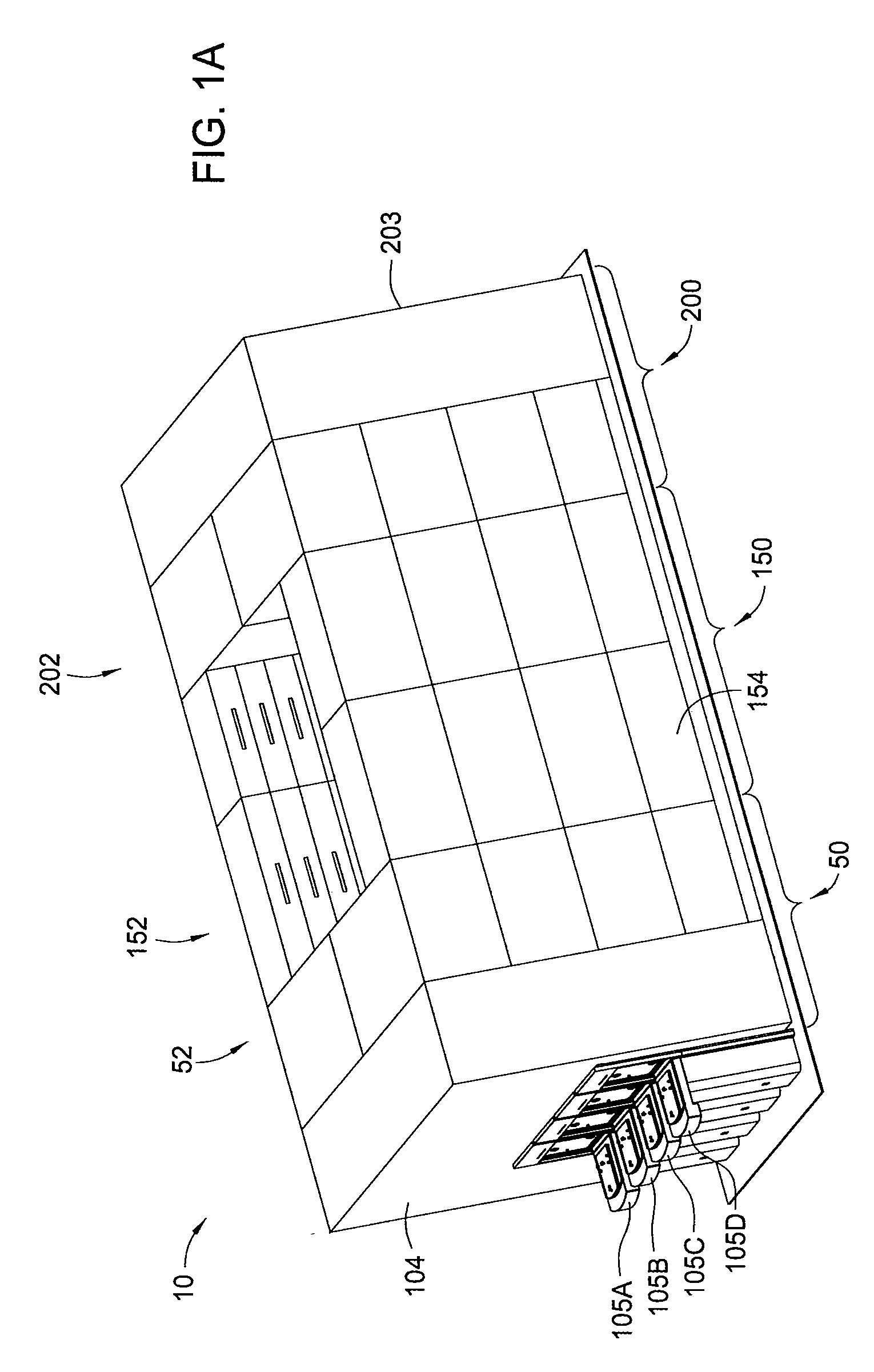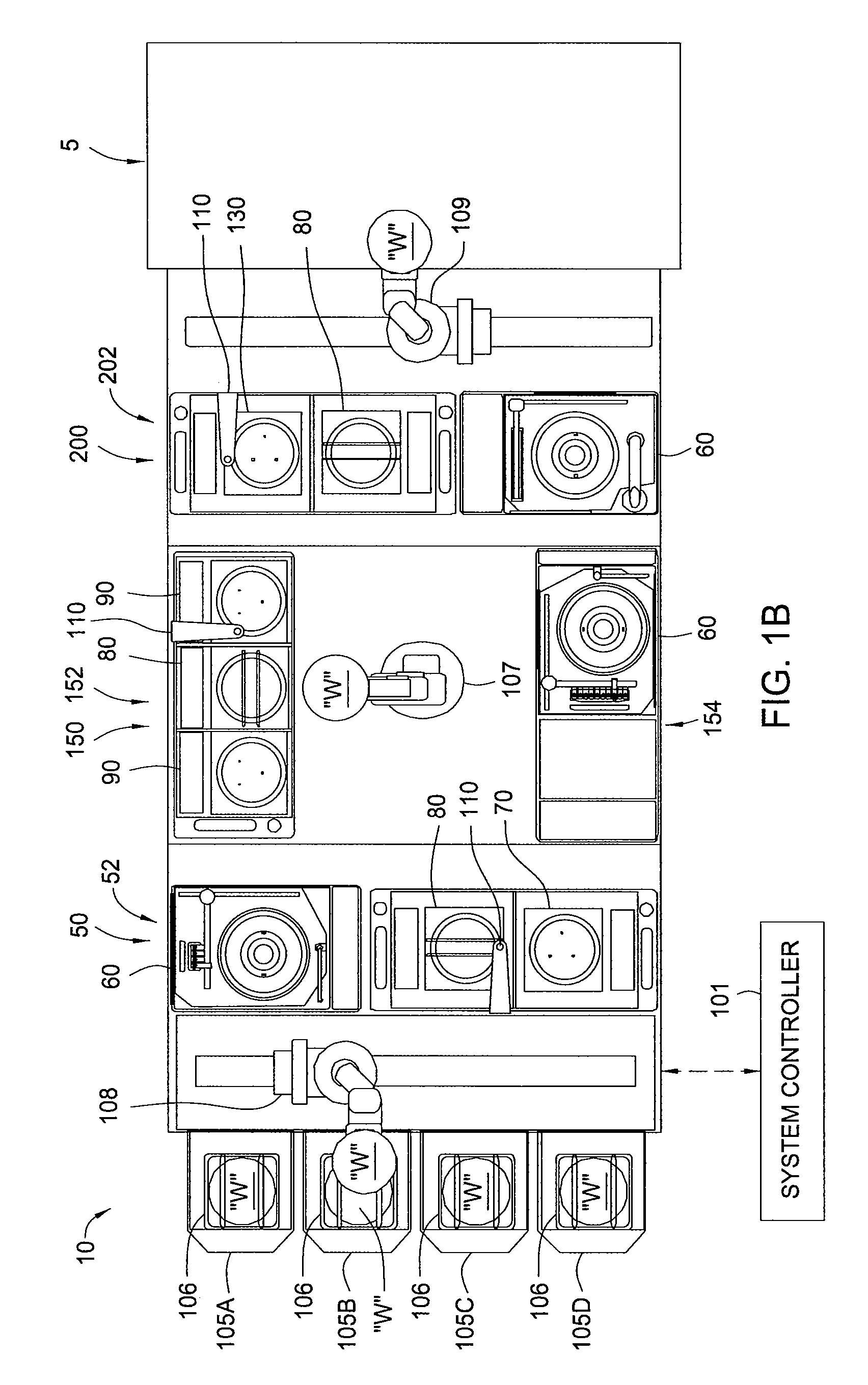Cluster tool architecture for processing a substrate
a technology of clustering tools and substrates, applied in the field of integrated processing systems, can solve the problems of limiting the throughput of the processing sequence, wasting a large amount of time for clustering tool users and manufacturers, and consuming a large amount of tim
- Summary
- Abstract
- Description
- Claims
- Application Information
AI Technical Summary
Benefits of technology
Problems solved by technology
Method used
Image
Examples
Embodiment Construction
[0108] The present invention generally provides an apparatus and method for processing substrates using a multi-chamber processing system (e.g., a cluster tool) that has an increased system throughput, increased system reliability, more repeatable wafer processing history (or wafer history) within the cluster tool, and also a reduced footprint of the cluster tool. In one embodiment, the cluster tool is adapted to perform a track lithography process in which a substrate is coated with a photosensitive material, is then transferred to a stepper / scanner, which exposes the photosensitive material to some form of radiation to form a pattern in the photosensitive material, and then certain portions of the photosensitive material are removed in a developing process completed in the cluster tool.
[0109]FIGS. 1A and 1C are isometric views of one embodiment of a cluster tool 10 that illustrates a number of the aspects of the present invention that may be used to advantage. One embodiment of t...
PUM
| Property | Measurement | Unit |
|---|---|---|
| distance | aaaaa | aaaaa |
| distance | aaaaa | aaaaa |
| temperature | aaaaa | aaaaa |
Abstract
Description
Claims
Application Information
 Login to View More
Login to View More - R&D
- Intellectual Property
- Life Sciences
- Materials
- Tech Scout
- Unparalleled Data Quality
- Higher Quality Content
- 60% Fewer Hallucinations
Browse by: Latest US Patents, China's latest patents, Technical Efficacy Thesaurus, Application Domain, Technology Topic, Popular Technical Reports.
© 2025 PatSnap. All rights reserved.Legal|Privacy policy|Modern Slavery Act Transparency Statement|Sitemap|About US| Contact US: help@patsnap.com



